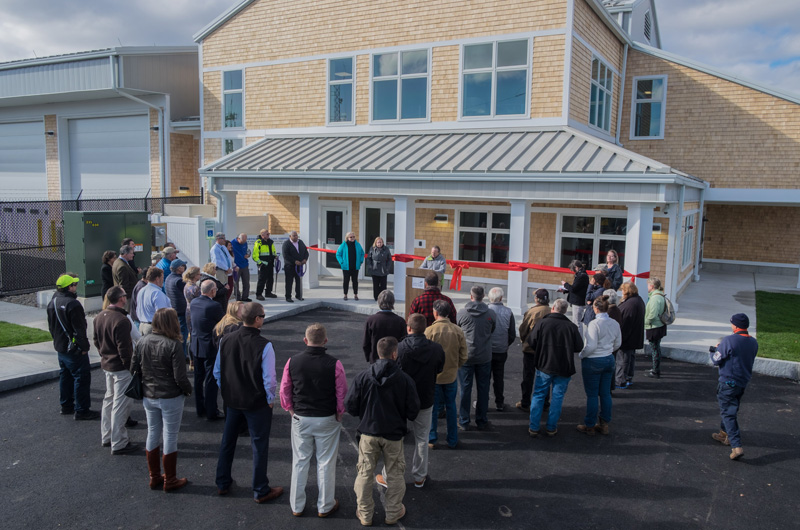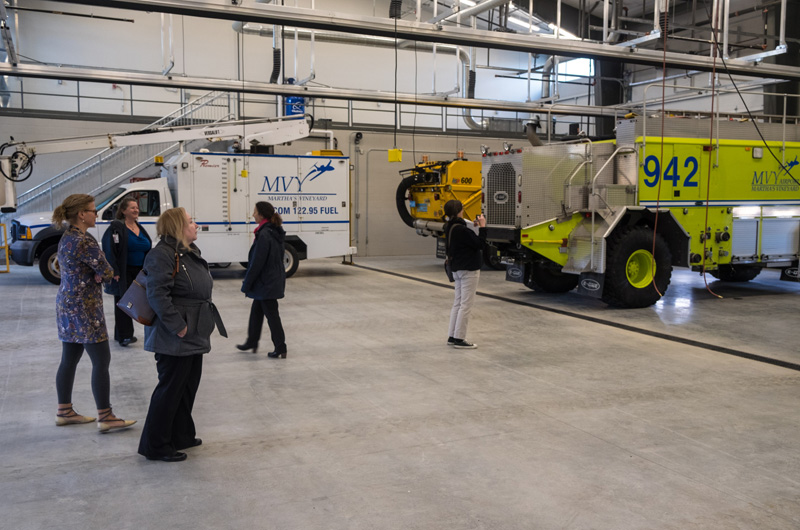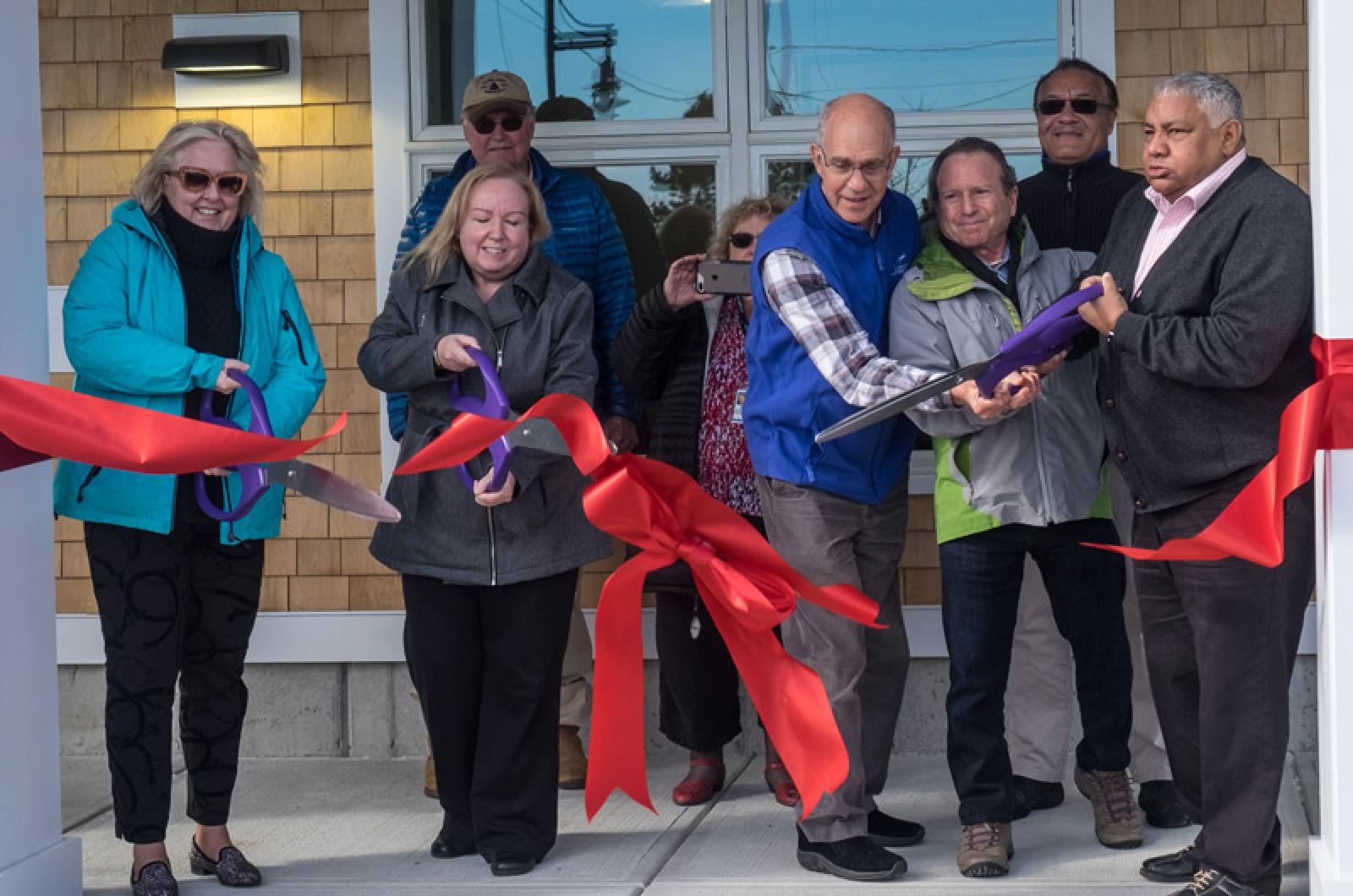Thirteen months after construction began on a new airport fire station, the Martha’s Vineyard Airport Commission held a ceremonial ribbon cutting and building tours for about 40 people Thursday afternoon.

“We’re really excited to have this thing done,” airport manager Ann Richart told the guests, who gathered on the blacktop of the new building’s still-unstriped parking lot as aircraft engines whined on the nearby tarmac.
Replacing a structure built by the Navy in 1942, the 23,000-square-foot facility is known, cumbersomely but comprehensively, as the Airport Rescue and Firefighting/Snow Removal Equipment (ARFF/SRE) building. Wood-shingled on the exterior, which will weather to match other Martha’s Vineyard Airport buildings, it cost $10.47 million to build and equip.
Most of the project was funded by grants from the Federal Aviation Administration ($8.3 million) and the aeronautics division of the Massachusetts Department of Transportation ($461,683). The remainder of the funding came from airport operations and lease income from the port’s business park, Ms. Richart said.
The two-story building has already been profiled in the current issue of Airport Improvement Magazine, which details the FAA’s 2015 ultimatum to the airport commission: Replace the 73-year-old fire station, or lose critical funding.
“This is something that was long overdue on Martha’s Vineyard,” said FAA regional administrator Mary Walsh, who traveled to the Island for Thursday’s ceremony. “I think it’s spectacular.”

In addition to massive bays for firefighting and snow-removal equipment — including one plow with a 20-foot-wide sweep for clearing runways — the new building has a command center with runway views and a clear sightline of the control tower, and workspace for airport operations employees who formerly had no desks to call their own.
A roomy, fully fixtured eat-in kitchen, bunk rooms with Murphy beds and a locker room will make it easier for workers to put in long hours at the airport during emergencies. Still to come: federally-funded workout equipment for a basement fitness room. “So if we need an emergency response, everybody’s ready,” Ms. Richart said.
The airport commission also has its own place in the new building: a conference room with its own bathroom, sink, coffee machine and a personalized mug for each commissioner.
Thursday’s ribbon cutting was a preview of what Ms. Richart said would likely be a Christmastime open house for the public at the new fire station.







Comments (9)
Comments
Comment policy »